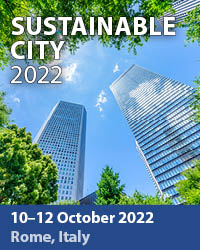Using The Full Potential: Regional Planning Based On Local Potentials And Exergy
Price
Free (open access)
Transaction
Volume
99
Pages
10
Published
2006
Size
3,220 kb
Paper DOI
10.2495/RAV060181
Copyright
WIT Press
Author(s)
A. van den Dobbelsteen, R. Roggema, K. Stegenga & S. Slabbers
Abstract
Climate change and the depletion of fossil energy resources pose a serious threat to many parts of the world. The northern region of the Netherlands, partly below sea level and currently depending importantly on the exploitation of natural gas, is a clear example of this. This paper discusses the studies undertaken to propose a radical change to the region, leading to a different approach to spatial planning, based on local potentials and the exergy principle. So far, energy has hardly been an influence in regional and urban planning. Nevertheless, smart deployment of local potentials for energy provision, based on the vernacular characteristics, will mean a new paradigm for spatial planning. Thorough analysis of the local climatic, landscape, geophysical, cultural, and technical characteristics with a focus on energy potential leads to better insight into the most effective energy provision opportunities in the areas of a region. In addition, the concept of low-exergy design – based on using high-quality energy for high-grade processes, and re-using the residual waste energy from these in lower-grade processes – will lead to serving more processes and functions by the same amount of primary energy, implying significant benefits for sustainability. Converting the deployment of local potentials and low-exergy design to regional planning, the spatial arrangement of functions will differ from the conventional approach. The new approach will be exemplified by the Grounds for Change project and its mapping results for the Northern Netherlands. Keywords: climate change, local potentials, energy, exergy, spatial planning.
Keywords
climate change, local potentials, energy, exergy, spatial planning.





